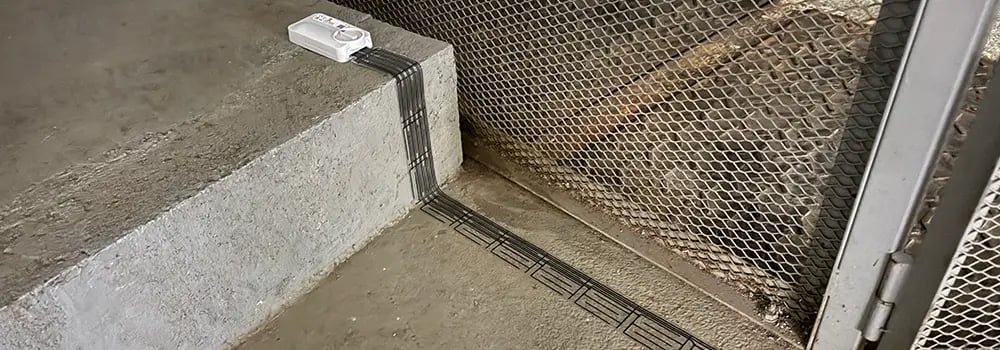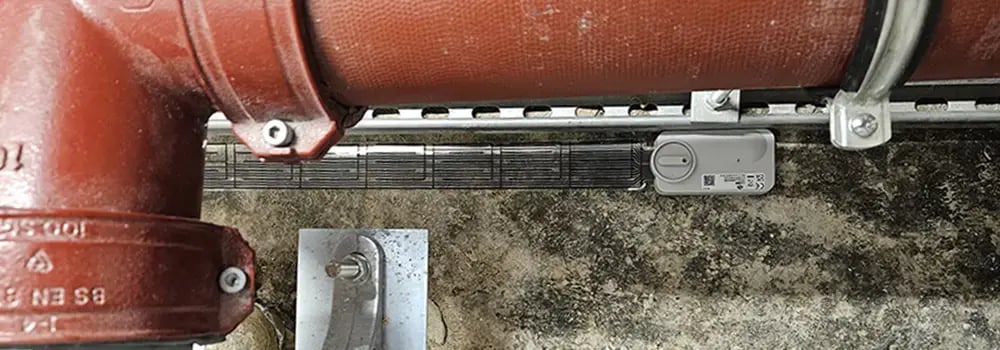Building a transformative technology isn't just about having the best product - it’s also about ensuring customers can deploy it easily, see immediate value, and scale with confidence.
At LAIIER, we work closely with customers who own and operate buildings for a variety of purposes - from multifamily residential, to life sciences, retail, and offices; as well as insurance carriers and brokers who want to support their commercial property line clients in reducing claims.
These close relationships have meant we've been on the ground with our customers as they pilot, deploy, and expand their use of our water leak sensors. It's an incredible privilege, and what we've learned has shaped our approach.
In the process, we’ve identified five key lessons that apply to any tech adoption effort. So whether you're rolling out new hardware, integrating a software platform, or transforming operational workflows, here are the five things that our customers tell us that they look for beyond the underlying technology.

1. Make installation and integration effortless
Lesson: The faster and easier it is to deploy, the more likely people are to try your tech - and stick with it.
No matter how impressive a technology is, if it’s complex to install or integrate, adoption suffers. This is especially true in operational environments like facilities management, where teams are already stretched thin, and adopting a new tool competes with urgent priorities.
What we’ve learned: Prioritizing a simple, fast, and non-invasive installation experience has paid off. Calling a plumber, drilling into infrastructure, or halting operations are all disruptions that make facilities teams' work harder - so installing devices in minutes, without specialist tools, is a much more successful approach. This significantly reduces time to pilot, which in turn reduces time-to-value. And once teams see the results, it's much easier for them to scale up quickly.
The takeaway: Streamlined deployment isn’t a nice-to-have - it’s a must-have. If you can remove complexity upfront, you’ll unlock faster experimentation and lower internal resistance.

2. Really understand your customers
Lesson: Your product will only solve your customers' problems, if you take the time to deeply understand their pain points.
Given the multitude of stakeholders involved in many purchases, there may not be a common understanding of the real pain points. Technology vendors who take the time to really listen and understand, and take a consultative, insight-driven approach are far more likely to gain trust and build lasting relationships.
What we’ve learned: Some of our best customer engagements began by co-modeling scenarios with them, like the cost of sub-deductible leaks or downtime from maintenance callouts. This process consistently revealed hidden expenses and helped build a strong business case for leak detection with quick payback periods.
The takeaway: Roll your sleeves up and go deep with customers on what causes them pain. Help them to understand the why as well as the how. Then help them quantify the value, and the cost of doing nothing.

3. Secure buy-in from stakeholders at all levels
Lesson: Successful tech adoption is a team sport: it needs alignment between economic, technical, and operational decision-makers.
Too often, technology rollouts stall because they don’t speak to the full stakeholder set. The buyer might be convinced, but the users are skeptical. Or the IT team raises red flags late in the process. Ensuring adoption means aligning priorities early and tailoring the conversation to different needs.
What we’ve learned: In our deployments, facilities managers often became internal champions once they saw how leak detection reduced downtime and maintenance burdens. But to scale, we also had to engage with VPs focused on operating budgets and with technical teams evaluating system security and integration.
The takeaway: Identify and engage all the relevant stakeholders, and make sure each group sees their own version of success.

4. Build trust through precision
Lesson: False positives and unreliable data erode confidence, but trustworthy systems drive scale.
In any data-driven solution, the quality of alerts or insights matters more than the quantity. If users can’t trust what the system is telling them, they’ll ignore it - even if the technology itself is sound.
What we’ve learned: In water leak detection, false positive alarms quickly create “alarm fatigue", which leads to distrust, and sometimes abandonment of solutions.
Our Severn WLD™ sensor’s multi-electrode design was engineered to distinguish between true water leaks from environmental noise, minimizing and even eliminating false positives. This precision has proven essential in building and sustaining trust with facilities managers, many of whom have been converted from skeptics to fans.
The takeaway: Accuracy builds credibility. Make your system as “right” as possible, and users will rely on it when it really counts.

5. Shine a light on hidden costs and risks
Lesson: The most powerful use case might be solving a problem the customer didn’t know they had.
Some of the most valuable technologies aren’t those that respond to obvious, high-profile risks, but those that uncover and address invisible drains on time, budget, or performance. These are often overlooked because they fall through the cracks of traditional reporting or budget structures.
What we’ve learned: Many of our customers only considered their deductibles and leak detection tech when they counted the cost of water leaks.
But the cost of repairs for most water leaks averages approximately US$1,973 per incident, which is well below their deductible, and is quietly absorbed into the general maintenance budget. By tracking and quantifying these “sub-deductible” costs, we've helped customers reframe the value of early water leak detection.
The takeaway: Help customers discover and name the hidden costs your solution addresses. That clarity can unlock urgency and investment.

Technology adoption is a process, not a transaction
Whether you're deploying water leak detection or implementing a new digital platform, the core challenges of adoption remain the same: reduce friction, surface insight, win trust, and build stakeholder alignment. The most successful solutions don’t just perform well: they work smoothly with existing workflows, help people do their jobs better, and deliver visible value from day one.
At LAIIER, these lessons have shaped how we design, deploy, and support our technology - and we believe they apply far beyond our specific industry. If you’re introducing new tech to your organization, or helping others do the same, start with these principles. You’ll not only improve adoption - you’ll create advocates.
Interested in learning more about how we apply these lessons in leak detection?
Get in touch with our team or explore how Severn WLD™ is leading the way in proactive water leak detection for commercially owned and operated buildings.